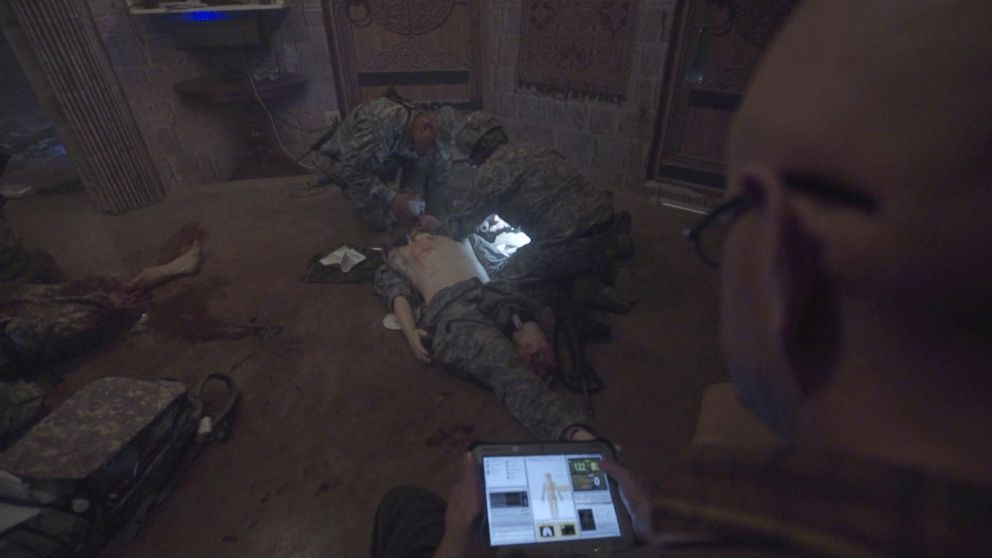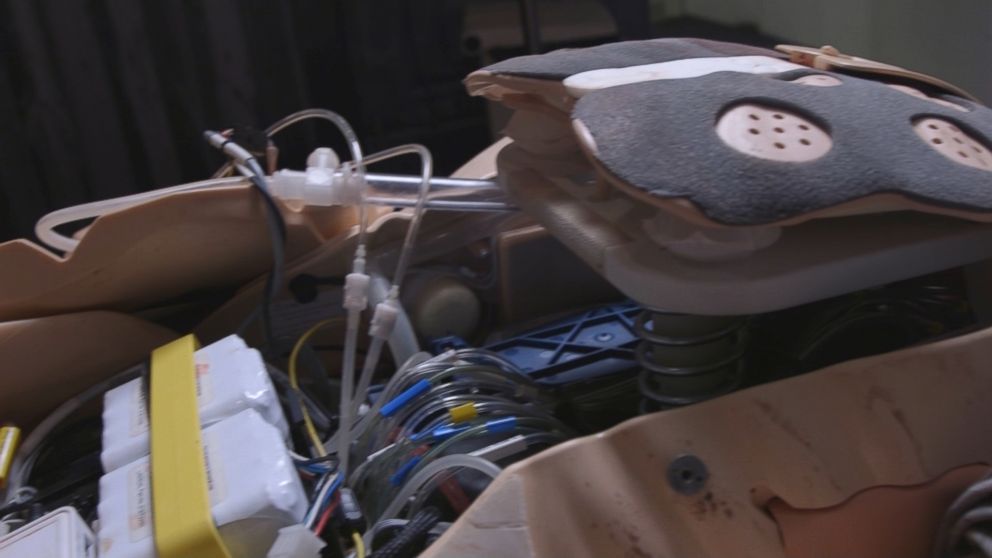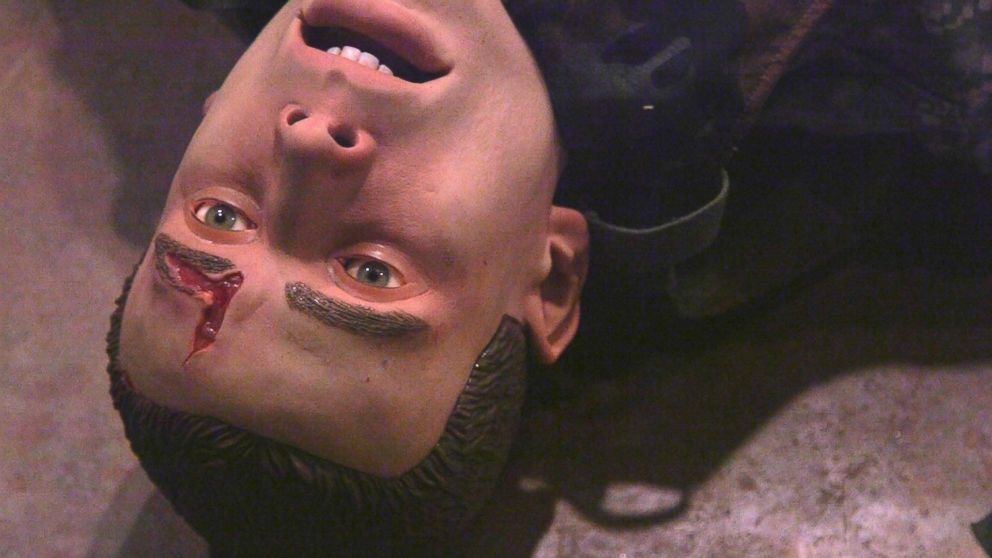How Military Dummies Can Save Lives
These mannequins are extremely lifelike.
— -- Saving a life can be hard enough, and doing it in the middle of a battlefield with bullets flying can seem nearly impossible. But military programs like the Medical Simulation Training Center (MSTC) at Fort Carson in Colorado are training military medics so they're prepared for almost every medical situation during combat.
The MSTC is a program that uses lifelike mannequins as well as special effects to mimic real-life combat scenarios. The mannequins can replicate cardiac arrest, gunshot wounds, loss of limb and other injuries common on the battlefield. They are even capable of showing various symptoms such as ear discharge, sweating and dilated pupils.
MSTC instructor Antonio Zavala told ABC News he's aware of medics and service members who were unable to care for injured troops because they did not have the proper training and preparation.
"Pretty much any intervention you can do on a real person you can do on these mannequins," he said.
"Finding the Next" full episodes are published Mondays on ABCNews.com and on ABC News' mobile apps. The entire series is available now on ABC News apps on Apple TV, Roku & Xbox One.
Various sensors, animatronics and a central computer in the mannequins can relay feedback to an instructor. The mannequin's condition can be changed from critical to stable by adjusting settings on an instructor's tablet that is connected to the mannequin.

One of the biggest benefits of these mannequins is that they are capable of providing instant feedback to the students. This feedback allows students to assess the situation and determine what procedure is necessary. The mannequins are equipped with inflating lungs to help students visualize the breathing pattern of their patient. Able to mimic a collapsed lung, the mannequins give students the opportunity to practice needle chest decompression.
The new tools are a far cry from how medics used to be trained.
"Training was nothing more than your NCO [noncommissioned officer] sitting down with you and pretty much going over a checklist," said MSTC student Henry Poolam. "Everyone was good at regurgitating the answers, but when it came time to apply it, is was a different story."

The mannequin has a circulatory system with variable blood pressure. A student can identify bleeding and apply pressure to stop it while a second person applies a tourniquet. If a student does not apply correct pressure on an artery or fails to correctly put on the tourniquet, the dummy will die.
These mannequins are giving service members the most realistic re-enactments of battle wounds without putting trainees' safety at risk.
While nothing can fully prepare medics for battle, these tools can help students develop the skills and instincts necessary to save lives in the face of danger.

For more stories from our "Finding the Next" series, just "star" this story in ABC News' phone app. Download ABC News for iPhone here or ABC News for Android here.




